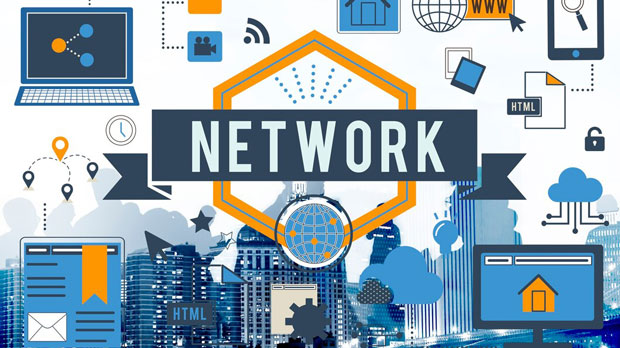How to use SOCKS5 agent for social media management Facebook, Instagram, Twitter, TikTok?
In today’s digital landscape, managing social media accounts across platforms such as Facebook, Instagram, Twitter, and TikTok has become an integral part of many businesses and personal brands. To achieve optimal social media management, a crucial aspect is ensuring privacy, security, and access to restricted regions. socks5 proxies have emerged as one of the most reliable tools to address these concerns. By rerouting internet traffic through a different server, SOCKS5 proxies can provide anonymity, enhance security, and allow access to geo-restricted content. This guide will delve into how to use SOCKS5 proxies effectively for managing social media accounts across these popular platforms. What is socks5 proxy and Why It Matters for Social Media Management?SOCKS5, short for “Socket Secure version 5,” is a type of proxy server that routes internet traffic between the user and the destination server. Unlike traditional HTTP or HTTPS proxies, SOCKS5 proxies operate at a lower level of the internet protocol stack, making them more versatile and capable of handling a broader range of traffic types, including social media management activities.SOCKS5 proxies provide several benefits for social media management:1. Anonymity and Privacy: By masking your real IP address and routing your traffic through a remote server, SOCKS5 proxies ensure that your online identity is kept secure.2. Bypass Geo-Restrictions: Some social media platforms have geo-restricted content. With a SOCKS5 proxy, users can select a server located in the desired country to access location-based content.3. Improved Security: SOCKS5 proxies can encrypt the data you send and receive, offering an additional layer of protection against cyber threats.4. IP Rotation: Managing multiple accounts on the same platform can be tricky, as many platforms restrict multiple logins from the same IP address. SOCKS5 proxies allow for IP rotation, preventing bans or restrictions related to IP addresses.Setting Up SOCKS5 Proxy for Social Media AccountsTo start using SOCKS5 proxies for social media management, follow these steps:1. Choose a Reliable SOCKS5 Proxy Provider First, choose a reliable SOCKS5 proxy provider that ensures stable, fast, and secure connections. The service should offer servers across different regions to enable access to geo-restricted content and provide anonymity. Ensure they offer features like IP rotation and high uptime for optimal performance.2. Configure SOCKS5 Proxy on Your Device Once you’ve chosen a provider, you’ll need to configure the SOCKS5 proxy on your device. This process will differ depending on your operating system and the social media management tools you are using. Most platforms like Facebook, Instagram, and TikTok allow proxy settings to be adjusted within the network configuration of the browser or app you’re using.- Windows/Mac Configuration: You’ll typically need to access your system’s network settings, enter the socks5 proxy server details (address and port), and authenticate using your credentials if required.- Social Media Management Tools: Many third-party tools designed for social media management (such as Hootsuite or Buffer) also support SOCKS5 proxy configuration. Simply enter the proxy details in the settings section to route traffic through the proxy server.3. Test Your Connection After setting up the proxy, ensure your internet connection is routing through the SOCKS5 server by checking your IP address online. You can use websites that display your current IP address and location to verify the proxy is functioning correctly.Benefits of Using SOCKS5 Proxy for Different Social Media PlatformsEach social media platform presents unique challenges, such as managing multiple accounts, accessing region-restricted content, and maintaining security. SOCKS5 proxies can help address these challenges effectively.Facebook and InstagramManaging Facebook and Instagram accounts often involves handling multiple profiles and business pages. This can trigger security flags if too many logins occur from a single IP address. Additionally, Facebook and Instagram may impose restrictions or bans on accounts that show suspicious activity, such as logging in from different locations.- Geo-Targeted Content: SOCKS5 proxies allow you to access content available in specific countries, such as local trends, advertisements, or region-specific posts, which is crucial for global brand management.- Multiple Account Management: By rotating IP addresses through SOCKS5 proxies, you can efficiently manage multiple accounts from the same platform without triggering platform security alerts.TwitterFor Twitter, managing multiple accounts, particularly for marketing campaigns, requires a high level of discretion. Twitter’s anti-spam measures often penalize users who attempt to log in from inconsistent IP addresses or locations. SOCKS5 proxies come in handy for avoiding account suspensions or bans.- Privacy and Anonymity: Using a SOCKS5 proxy ensures that your actions on Twitter remain anonymous, protecting your identity and reducing the risk of malicious attempts to hack your account.- IP Rotation for Multiple Accounts: For businesses managing several Twitter accounts, SOCKS5 proxies allow smooth IP rotation, ensuring that each account appears to be accessed from different, legitimate locations.TikTokTikTok is rapidly growing in popularity and, like the other platforms, often imposes regional restrictions on its content. Additionally, TikTok users face challenges when trying to manage multiple accounts or operate in restricted regions.- Access Region-Specific Content: By using a SOCKS5 proxy, you can bypass regional limitations and access TikTok content from other countries, allowing you to monitor trends, engage with audiences, and tailor content accordingly.- Maintaining Account Privacy: Using a SOCKS5 proxy helps ensure that your account management remains private, providing an extra layer of security when posting videos or interacting with followers.Best Practices for Using SOCKS5 Proxy in Social Media ManagementTo maximize the benefits of SOCKS5 proxies, consider these best practices:1. Regularly Rotate IP Addresses: Constantly changing your IP address makes it harder for social media platforms to track your activities. Rotate your IP regularly to keep your accounts safe.2. Ensure Compatibility: Before committing to a SOCKS5 provider, ensure that it works seamlessly with the social media management tools and platforms you are using.3. Use Strong Authentication: When configuring your SOCKS5 proxy, always use strong authentication methods to secure the proxy connection.4. Monitor Your Traffic: Keep an eye on your proxy’s performance to avoid slowdowns or connection drops that can interfere with managing social media accounts.ConclusionSOCKS5 proxies offer an effective solution for managing social media accounts across various platforms such as Facebook, Instagram, Twitter, and TikTok. By ensuring anonymity, enhancing security, and bypassing geo-restrictions, SOCKS5 proxies allow for smooth and efficient account management. Adopting best practices, such as IP rotation and secure authentication, will help you make the most of this powerful tool and maintain a secure and streamlined social media strategy. Whether you're managing personal accounts, handling business profiles, or promoting a brand, SOCKS5 proxies can significantly improve your social media management experience.
2025-01-30

























































